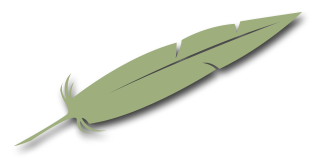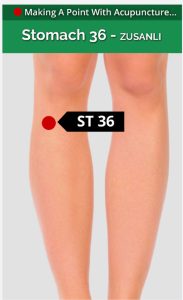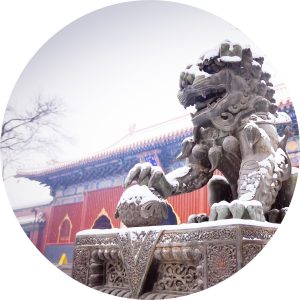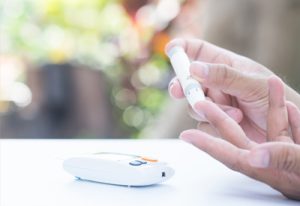- WE MOVED !!!
-
 Professional Acupuncture & Physical Therapy1118 East Superior Street
Professional Acupuncture & Physical Therapy1118 East Superior Street
Duluth, MN 55802(218) 724-3400 Clinic Hours
Mon8:00 am - 4:30 pmTue1:45 pm - 4:30 pmWed8:00 am - 4:30 pmThu8:00 am - 4:30 pmFriCLOSED

- Long Covid Booklet
Acupuncture
Strengthen Your Immune System with TCM

It’s that time of year again…the weather is getting colder, the leaves have fallen off the trees and people are beginning to trickle into the office with autumn colds and allergies. As an acupuncturist, I have to say I rarely get sick. I have lots of tools and tricks in my bag to stay healthy during cold season, and I’m happy to share some of them with you!
You know how your mom always made you wear a scarf when you were a kid, telling you that you’d catch a cold if you didn’t? I used to think that she was just saying that, but as it turns out, there was something to it after all! In the world of Chinese medicine, there is an area at the back of the neck which can absorb wind and cold, allowing it to permeate into your system and creating an ideal situation to catch an actual cold. By keeping this area warm and covered, you are putting up a shield between yourself and this invading wind, increasing your chances of avoiding colds.
Since we acupuncturists view cold as an entity that can migrate into your system, adding warm foods into your diet can help to balance out that cold, keeping you healthy or speeding up your recovery once a cold has set in. Eating chicken soup to ward off illness isn’t just a fallacy; the temperature of the soup is helpful, but there are also lots of “warm” ingredients within the soup. Every food has an energetic quality, and warm spicy foods balance out excess cold in the system. Most good chicken soup has garlic, pepper and other spices that are considered “warm” in TCM.
Adding spicy foods into your diet when cold season hits is a way to protect yourself from succumbing to the sniffles. Whenever I begin to feel a cold coming on, I sautee slices of ginger with a little butter or oil, and add it to a tea made with lemon, honey, cinnamon, clove and a dash of cayenne. I let the ginger soften as I drink the tea, and then eat the ginger. This never fails to get me feeling healthy again, if I drink it before the cold settles into my system. It’s also delicious!
Staying warm and eating the right foods are two ways to stay healthy, and another is acupuncture. If you don’t have access to your acupuncturist, the next best thing is to utilize some acupressure points to crank up your immune system. If you slide your finger down the side of your thumb, you will hit a bone just below the wrist crease. Keep sliding down about an inch or so, and press hard while feeling for a tender spot. This is Lung 7, which is a powerful point to build up the energy of the lung, which boosts the immunity. Another great immunity point is Stomach 36. This point is located approximately four fingers down from the bottom of the knee cap, along the outer boundary of the shin bone. This point boosts the energy of the entire body, so massaging it will help to keep your “Wei Qi” up. This Wei Qi is your defensive energy, which creates a barrier between yourself and pathogens that cause harm. In Western terminology, it would be the equivalent of the immune system. Pressing on both of these points will allow you to tap into the positive effects of acupuncture, minus the needles.
Meridian Point For Winter: Stomach 36
 Stomach 36 can easily be said to be the number one acupuncture point in the body. This point
Stomach 36 can easily be said to be the number one acupuncture point in the body. This point
is named Zu San Li in Chinese, which can be translated to mean leg three measure. This name describes its location below the knee on the outer side of the shin bone. Other alternative names for this influential point are Lower Sea of Qi, Ghost Evil and Lower Mound.
Although it is located on the leg, this point is the command point of the abdomen. Because of this function, Stomach 36 can be used for all digestive problems, including constipation, food stagnation, stomach pain, diarrhea, indigestion, vomiting, hiccups and gastroenteritis.
The spleen and stomach organs in Chinese medicine are the source of post-natal Qi, this Qi which is acquired after we are born. Because of this, Stomach 36 is a very tonifying and energy-building point. It can help with weakness and dizziness, as well as promoting longevity, especially when combined with moxibustion (the burning of the herb moxa on acupuncture points). Wei Qi is the defensive Qi in the body and can likened to the immune system and Stomach 36 can help build Wei Qi to defend against illness.
Locally, Stomach 36 can be used for edema and swelling in the leg, pain in the leg, atrophy
of the lower limbs, varicose veins and just promoting good circulation. Stomach 36 helps pass urinary and gall stones, promotes lactation, reduces hypertension and helps with difficult urination and incontinence.
Traditional Chinese Medicine and the Season of Winter

The ancient Chinese developed a system of medicine thousands of years ago and that system is still used around the world today. This system incorporates more than just medicine though. Traditional Chinese Medicine practitioners also educate their patients on how the seasons affect the body and ways to stay healthy. This will ultimately lead to a long, healthy life.
Traditional Chinese Medicine teaches that humans should live in harmony with the seasons. According to TCM there are five seasons – winter, spring, summer, late summer and fall. Each season has many associations that help us change our habits allowing for a more balanced mind and body. When these systems were being developed, people were living in harmony with nature. People rose with the sun, ate what was available during the different seasons and they were much more aware of their natural environment. What to wear, when to wake up, when to go to sleep and what activities to engage in were all dependent on the weather and the environment. Because of this, people were capable of staying healthy throughout the year and their immune and organ systems were strong enough to ward off disease.
 In this system, the season of winter is a time of repair and rejuvenation. Winter is associated with the kidneys, which hold the body’s fundamental energies. Harmonizing with the seasons will help the body stay healthy and prepared for each succeeding season. Rest is important for revitalizing the kidneys and this is why some animals hibernate during the winter months. Winter is also a really good time to turn inward and do some reflection. This is why practices like tai chi, qi gong and yoga can be very beneficial during the winter season. These practices help us connect to our inner selves, while supporting the kidney energy. These practices help relax the mind and calm our emotions.
In this system, the season of winter is a time of repair and rejuvenation. Winter is associated with the kidneys, which hold the body’s fundamental energies. Harmonizing with the seasons will help the body stay healthy and prepared for each succeeding season. Rest is important for revitalizing the kidneys and this is why some animals hibernate during the winter months. Winter is also a really good time to turn inward and do some reflection. This is why practices like tai chi, qi gong and yoga can be very beneficial during the winter season. These practices help us connect to our inner selves, while supporting the kidney energy. These practices help relax the mind and calm our emotions.
Winter is also associated with ears in this system. Our ability to hear is related to the health of our kidneys. The stillness of the winter months allows us to hear the world more clearly and forces us to slow down. The bones are also associated with winter, which means that it is important to tonify and heal any orthopedic problems during these months.
There are many foods that are beneficial to eat during the winter season. These foods should be the ones that naturally grow during this season. Food items like squash, potatoes, root vegetables, winter greens, cabbage, carrots, apples, pears and mushrooms are all examples of things that should be incorporated into the daily diet during the winter months. Also warming foods such as soups and bone broth are highly recommended. There are foods that specifically target and nourish the kidneys too. These foods include black beans, kidney beans, lamb, walnuts, chicken, dark leafy greens and black sesame seeds. It is recommended to cook items for longer periods of time, on lower heat and with less water, as the food should be warming as well as nourishing.
When we align ourselves with the natural processes of life and the seasons, our bodies will adjust and perform optimally, just as they are intended to. This is how we are supposed to live and can quite possibly be why there is so much more disease now than in the past. So to be the healthiest you possible, learning to take cues from the seasons might just be the best suggestion ever.
3 Alternative Gifts to Give this Winter
The holidays are about giving. Whether it be giving gifts to your family, community or co-workers, everyone knows it is the season to help other people. Unfortunately, not everyone has the same living situation as one another and there are millions of people throughout the world that are in need. A great gift to give someone you love is the gift of helping people who need it most. Here are a list of charitable foundations and alternative gifts you can give your loved ones to not only make them happy, but to make loads of other individuals have a warm and bountiful holiday season as well.
- World Vision – Sponsor a child
World Vision is a well-renowned charity that allows you the option to sponsor a child, the child can be sponsored in your name or in lieu of somebody else you plan on giving the gift too. This truly is a remarkable charity. When you sponsor a child you can help them work their way out of poverty. World Vision states that they help more than four million children in over 100 different countries. To learn how you can sponsor a child go to www.worldvision.org
- World Vision – Donate an Animal
Another beneficial opportunity World Vision offers to help those in need is the donation of an animal, and there are a plethora of different options. The World Vision site offers price points and specifics on what animals you can give to families in need. From goats and chickens to alpacas there are many options you can choose from to really assist those who need help.
- Big Sunday
Big Sunday is a charitable organization that donates to shelters, food banks and various social programs across the country. Big Sunday has an emphasis of helping people get back on their feet so they can live their lives to their fullest potential. There are various ways to help out a Big Sunday in order to bring cheer to those less fortunate. Donate money, clothes, gently used items and books are key examples of how you can help at Big Sunday. But those are just a few of the over 2,000 ways Big Sunday states they offer to help the underprivileged.
Research Update – Acupuncture and Diabetes

A study published by the Healthcare Medicine Institute found acupuncture can effectively decrease symptoms of diabetes. This study actually looked at two clinical trials and determined both showed improvement for the participants. The first trial focused primarily on the usage of acupuncture, coupled with moxibustion. The second trial aimed to study diabetic gastroparesis and how it can be treated using acupuncture. Both trials concluded the overall symptoms of diabetes sufferers can be greatly decreased through the use of acupuncture and Traditional Chinese Medicine. The trial that used both acupuncture and moxibustion yielded an 84.78 percent efficacy rate for those diagnosed with yin deficient diabetes and a 69.75 percent efficacy rate for those diagnosed with yang deficient diabetes.
Diabetes is now labeled as an epidemic in the United States, with nearly 29 million Americans suffering from the disease and another 86 million on the verge of becoming diabetic, as they deal with prediabetes. According to the Centers for Disease Control, diabetes is the seventh leading cause of death in the United States and the leading cause of kidney failure, lower limb amputations and adult-onset blindness.
 Diabetes is caused by dysfunction of the pancreas. There are two forms of diabetes, type 1 and type 2. Type 1 diabetes is a chronic condition in which the pancreas produces little or no insulin. Type 2 diabetes is the most common and it affects the way the body processes blood sugar or glucose. While Type 2 diabetes is usually reversible through proper diet and exercise. The usual treatments include daily injections of insulin and blood sugar monitoring. But due to the standard American diet (SAD), many people in the U.S. are constantly struggling and unfortunately, losing the battle. This is where TCM may be able to help.
Diabetes is caused by dysfunction of the pancreas. There are two forms of diabetes, type 1 and type 2. Type 1 diabetes is a chronic condition in which the pancreas produces little or no insulin. Type 2 diabetes is the most common and it affects the way the body processes blood sugar or glucose. While Type 2 diabetes is usually reversible through proper diet and exercise. The usual treatments include daily injections of insulin and blood sugar monitoring. But due to the standard American diet (SAD), many people in the U.S. are constantly struggling and unfortunately, losing the battle. This is where TCM may be able to help.
In numerous studies, TCM has been shown to lower blood sugar levels, decrease the symptoms of polyphagia (urge to eat constantly), polydipsia (excessive thirst) and polyuria (excessive urination), improve microcirculation and enhance blood flow to the peripheral areas of the body.
Acupuncture, one of the many modalities used in TCM, uses hair-thin, solid needles to trigger the body’s regulatory systems that then release chemicals that stimulate the secretion of hormones, reduce pain and inflammation and help the body restore homeostasis. The blood glucose lowering effects of acupuncture are due to the down-regulation of cortisol. Cortisol is a stress hormone that encourages the liver to create glucose, which is thought to be the reason that insulin sensitivity is increased.
Another facet of TCM that can help greatly with diabetes patients is diet and herbal formulations. There are many foods and herbs that have showed significant hypoglycemic action. These include mung beans, rehmannia, astragalus, lycium bark and fruit, ginseng and even asparagus root.
TCM offers hope for those suffering from diabetes without the adverse side effects frequently associated with the prescribed medications. If you or somebody you know suffers from diabetes, consider contacting us at (218) 724-3400 to see what we can do for you. We are conveniently located on 2nd Street in Duluth Minnesota.
Research Update: Acupuncture and Seasonal Affective Disorder

A study published by the National Institute of Health looked at the management options for treating depression. Depression is one of the most prevalent symptoms of seasonal affective disorder. This study was conducted by the Canadian Network for Mood and Anxiety Treatments. They looked at multiple complementary and alternative methods for treating depression, including light therapy, acupuncture, exercise, yoga and natural health supplements like Omega 3 fatty acids and St. John’s Wort. The study concluded acupuncture is most commonly used as a third line of treatment for those seeking alternative methods to deal with depression, despite the fact it tends to be very effective.
 Seasonal Affective Disorder, also known as SAD, is really a form of depression that affects people worldwide. It is most commonly experienced during the fall and winter months. The symptoms of SAD include depression, hypersomnia, lethargy, difficulty concentrating, overeating, negative thoughts and decreased social interaction. Higher levels of anxiety are experienced at the end of the summer season as those who suffer from this ailment start to anticipate the coming months of less sunshine and increased symptomatology. Traditional Chinese Medicine and acupuncture are great choices for treatment of this condition.
Seasonal Affective Disorder, also known as SAD, is really a form of depression that affects people worldwide. It is most commonly experienced during the fall and winter months. The symptoms of SAD include depression, hypersomnia, lethargy, difficulty concentrating, overeating, negative thoughts and decreased social interaction. Higher levels of anxiety are experienced at the end of the summer season as those who suffer from this ailment start to anticipate the coming months of less sunshine and increased symptomatology. Traditional Chinese Medicine and acupuncture are great choices for treatment of this condition.
Traditional Chinese medicine (TCM) is very effective in treating depression, including Seasonal Affective Disorder. Modern medicine usually treats depression with antidepressants and psychotherapy regardless of the presenting symptoms. In contrast, TCM diagnoses each patient on an individual basis and treats the specific symptoms, while also addressing the root of the illness. TCM incorporates multiple modalities such as acupuncture, Chinese herbs, tuina massage, cupping and exercises like qigong to help restore balance to the body. Traditional Chinese medicine also treats the person holistically instead of treating mind and body separately.
The theory behind treating depression using TCM, all revolves around the concept of Qi (pronounced “chee”). Qi is considered the vital energy that flows through the body and animates everything. When Qi is blocked or stagnant, illness can take root, either physically or mentally. Qi flows throughout the body on energetic pathways or meridians. Each energetic meridian is associated with an organ and each organ has its own emotion.
Acupuncture releases endorphins. By doing so, it improves the flow of Qi throughout the body while eliminating blockages and bringing balance to the mind and body. Endorphins counter the symptoms of depression and allow the person to resume a normal life.
Acupuncture and Traditional Chinese Medicine can help alleviate symptoms of depression while also attacking the root cause(s), thus bringing the body and mind back into balance. The body and mind are inseparable and should be treated as a whole, which is the approach used by acupuncturists.
If you are suffering from Seasonal Affective Disorder or depression and are looking for a natural way of dealing with it, contact me at (218) 724-3400 to find out more about how acupuncture may be right for you.
The Season of the Lung and Large Intestine Channels

Fall or autumn is a favorite season for many people. The weather is getting a little cooler, things are starting to slow down and preparations for the holidaysare in full swing…..
For many others, fall is not so festive. Many people tend to get sick during the fall months, allergies can flare up for some, and many don’t like that the hours of sunlight decrease steadily, sometimes leading to seasonal depression. In Traditional Chinese Medicine, fall is the season associated with the lung and large intestine energetic meridians. These two meridians work in a symbiotic way to control the immune system from both the inside and outside of your body. And if you take good care of these two meridians during the fall, you are bound to feel better throughout the season. Here are some suggestions on how to get through the season of the lung and large intestine channels.
 First off, start wearing scarves. The scarves don’t have to be thick or heavy, but they should cover the neck. The large intestine channel runs up the arms, across the shoulders, up the neck, over the face and ends next to the nose. As many people now know, the health of our gastrointestinal tract plays a big part in our immunity. So keeping the large intestine channel warm and preventing exposure from the elements will help to keep you healthy. Cold pathogens can enter the body through the pores or nasal cavity. But wrapping the neck and shoulders with a scarf can help ward off the pathogens.
First off, start wearing scarves. The scarves don’t have to be thick or heavy, but they should cover the neck. The large intestine channel runs up the arms, across the shoulders, up the neck, over the face and ends next to the nose. As many people now know, the health of our gastrointestinal tract plays a big part in our immunity. So keeping the large intestine channel warm and preventing exposure from the elements will help to keep you healthy. Cold pathogens can enter the body through the pores or nasal cavity. But wrapping the neck and shoulders with a scarf can help ward off the pathogens.
Another way to keep the lung and large intestine channels balanced is to eat according to the season. This means eat foods that are available during the autumn months as well as foods that boost the energy of the lung and large intestine meridians. In the fall, you should eat fewer cold and raw foods like salads and instead you should eat more warm, cooked foods. Utilizing the foods that are available at this time of year is a good practice as well. Foods to enjoy during the fall months include apples, squash, broccoli, sweet potatoes, pears, yams, bananas, cabbage, carrots, cranberries, ginger, pumpkin, cinnamon, nutmeg and wild rice. Also hot herbal teas are a good addition to your daily diet, especially those containing ginger and lemon, which act as natural antibiotics.
The large intestine and the lungs need to stay moist to function properly. So drinking lots of water is important. Most people know how important it is to stay hydrated during the summer months, but it is just as vital during the autumn. Without proper hydration the skin, which is controlled by the lung meridian, can become dry and cracked allowing pathogens to easily enter the body. The large intestine meridian needs proper hydration to be able to expel any pathogens that have gotten into the system. So don’t forget to drink lots of water during the fall.
As we approach the fall months, it is also a good idea to increase your regular acupuncture treatments. There are several acupuncture points that help boost immunity and fight off colds. Why not utilize the natural power that Heidi has to offer? By doing so, you might just survive the fall without ever getting sick.
3 Points to Balance Your Energy this Fall
It is best to always have your energy aligned and balanced. To make sure your energy is balanced throughout this fall season here are three acupressure points you should utilize to ensure this. Acupressure is a great way to stay healthy and to balance energy, check out these points!
- Large Intestine 4 (LI 4) A reliever of headaches and tense muscles, LI 4 is a great point to use to balance energy. In addition to making sure you are balanced it promotes healthy bowel functionality throughout the body. LI 4, is referred to as He Gu, or the “Adjoining Valleys.” It is the point where energy cleanses the body and clears out what is no longer needed, this point clears the system and replenishes Qi. Position your left hand flat with your palm down, now squeeze your thumb and index finger together, locate a fleshy mound that appears between the two fingers and press on this point with your right thumb above and index finger below.
- Large Intestine 11 (LI 11) To relieve pain within your arm, shoulder or elbow use this acupressure point. LI 11 also regulates the digestive tract and the blood, in addition, this point cools heat and alleviates dampness. LI 11, the earth point of the large intestine meridian, is located at the crease of your elbow. To find this point bend your elbow in a 90-degree angle, place your thumb on the outside of the elbow crease and press.
- Lung 2 (LU 2) Yu Men, or the Gateway of Gathering Clouds is the gateway where we are able to receive fresh sunshine, the rain and cloudy days. This point is very useful for balancing energy when you are overwhelmed with stress, it calms the body. To find LU 2, locate the area above the collarbone where it meets the shoulder blade, at this location there should be a depression, apply pressure there to harness the balancing powers of this acupressure point.
